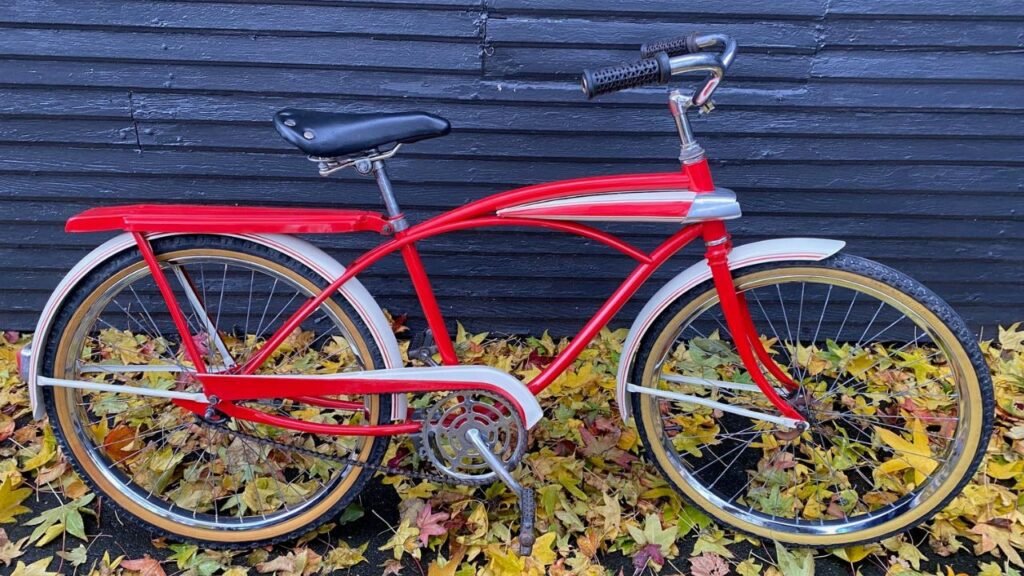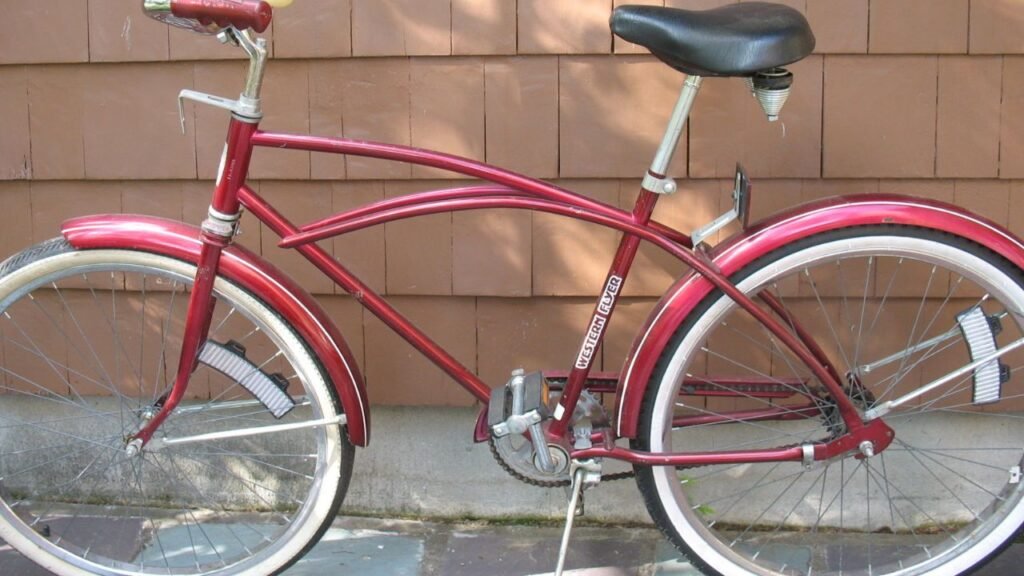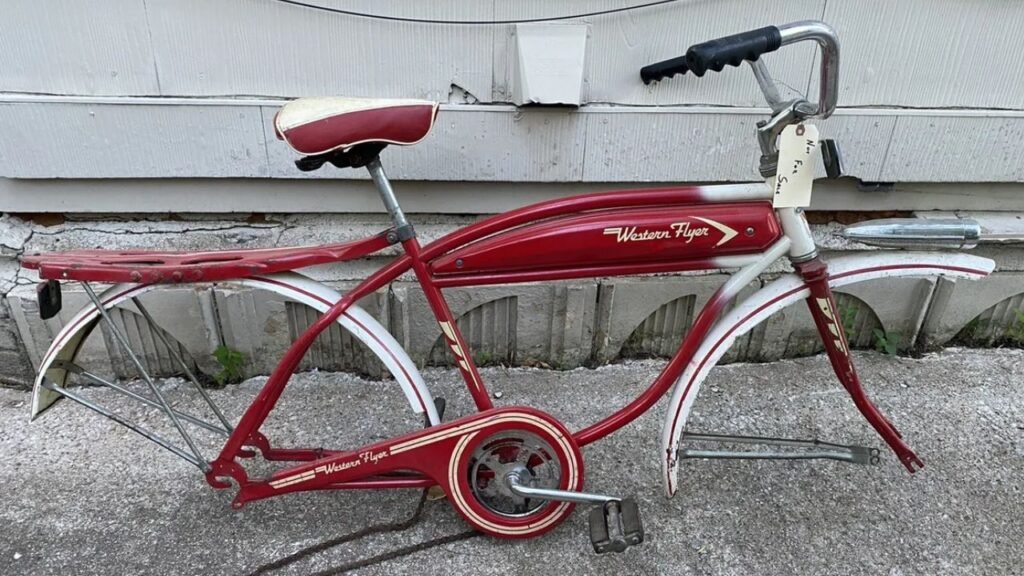How To Date A Western Flyer Bicycle? Western Flyer was an iconic American bicycle brand that was highly popular throughout the 20th century.
First produced in 1936 by the Western Auto Supply Company, these affordable and sturdy bikes became a classic for generations of American riders.
Whether cruising around the neighborhood or taking long rides through the countryside, Western Flyers were a ubiquitous part of life for many.
Determining the precise age and year of manufacture is crucial for buyers, sellers, restorers and historians alike.
An accurately dated Western Flyer can reveal insights about its place in the brand’s timeline, potential rarity, and historical significance.
This guide will outline the key methods for pinpointing when your Western Flyer bicycle rolled off the assembly line.
How To Determine the Age of Your Western Flyer Bike?

1. Look for the Serial Number
The first and most straightforward way to date a Western Flyer is by decoding the serial number stamped into the frame.
On classic ballooner models, this number can typically be found on the bottom bracket shell underneath the seat tube junction. For middle-weight and lightweight models, check the head tube or rear fork ends.
Western Flyer used a date coding system where the first two digits of the serial number represented the year of manufacture.
For example, a serial starting with “53” would indicate the bike was made in 1953. However, the company reset their date codes every decade, so a “60” prefix could mean either 1960 or 1970 – requiring additional clues to pinpoint the exact decade.
Some sample Western Flyer date codes:
- 42xxxxxx = 1942 model
- 68xxxxxx = 1968 model
- 01xxxxxx = 2001 model (after acquisition by Roadmaster)
2. Identify Components and Features
In addition to serial numbers, the actual components, styling and design details of a Western Flyer can provide strong hints about its era of production.
Experienced collectors learn to recognize the unique parts and aesthetics that Western Auto updated year after year.
For example, the transition from classic 1940s “ballooner” tire bikes with spring cushion saddles to the straight-bar middle-weight models of the 1950s and 60s.
Or subtle changes like the introduction of hand brakes, derailleur gearing, and twin-cylinder sidepull caliper brakes on later lightweight models.
Sprocket designs, pedal styles, and grip patterns all continued evolving over Western Flyer’s decades of manufacturing as well.
The company’s catalogs are a great reference, providing detailed photographs that showcased the current models each year.
Studying these images side-by-side can train your eye to recognize bench variations between Western Flyer model years based on small but distinctive component redesigns.
3. Research Logos and Brand Markings

The visual logos and branding found on Western Flyer bikes provide another strong indicator of the manufacturing era.
The iconic winged shield emblem itself went through several redesigns over the decades that collectors have documented.
On early ballooner models from the late 1930s through 1950s, the Western Flyer logo featured a more vintage, curved style with thicker lettering and outlines.
This transitioned to a sleeker, sans-serif winged shield for the lightweight models starting in the 1960s.
You’ll also want to look for any references to the “Western Auto Supply Co.” name, as this was eventually truncated to just “Western Auto” in later decades.
Beyond the primary logo, pay attention to other maker’s marks, decals, and head badges which can indicate certain eras of production.
Some examples are the iconic “Flying W” icon, or models badged as being produced by Western Flyer’s parent “Western Cycle & Auto Supply Co.” This lasted until the brand was acquired by Roadmaster Corporation in the late 1900s.
Matching the specific logos and branding with known examples from that period provides a strong forensic tool for pinpointing the manufacture date range when combined with other evidence.
Just be aware that some unscrupulous sellers may add reproduced decals, so reliable examples with all original factory markings are ideal references.
4. Utilize Online Resources
The internet has become an invaluable resource for collectors and enthusiasts looking to accurately date their Western Flyer bikes. There are now extensive archives and databases available online cataloging vintage models with detailed photos and year-by-year comparisons.
Sites like The Classic and Antique Bicycle Exchange provide incredible references verified by certified experts.
You can browse listings sorted by manufacturer, model year, and even search by individual serial number to find matches.
This helps verify details or identify transitional years when certain components and graphics were updated.
In addition, there are several active online collector forums dedicated to Western Flyers and other classic American bicycles.
The Wheelmen antique bicycle club and The Wheelmen Facebook group both have very active Western Flyer discussions.
For the truly dedicated, it’s also still possible to purchase official reprinted Western Flyer catalog scans covering each year’s model lineup in comprehensive detail.
These original materials are invaluable references showcasing all the up-to-date specs, pricing and imagery that would have been on showroom floors when the bikes were new.
Conclusion:
As you can see, accurately dating a vintage Western Flyer bicycle requires a multifaceted approach examining all the available evidence. Serial numbers provide a good starting point, but need to be corroborated by analyzing the actual construction and aesthetic details matched against verified examples from that era.
If you’re still struggling to conclusively date a Western Flyer after exploring all these avenues, reach out to the thriving community of collectors and historians. Dedicated enthusiasts are always happy to examine photos and documentation to determine a bike’s accurate manufacture year based on their extensive knowledge and experience.
With some patience and persistence, any true Western Flyer fan should be able to precisely pinpoint that classic American bicycle’s rightful place in history!
FAQs:
What was the most popular era for Western Flyer production?
The Western Flyer brand reached the peak of its popularity in the 1950s and 1960s after transitioning from the classic ballooner models to new middleweight and lightweight styles.
During this postwar period, Western Auto’s vertically-integrated manufacturing allowed them to mass produce affordable bikes tailored for booming American suburbs.
Classic models like the vintage Western Flyer X-53 middleweight were iconic sights in neighborhoods across the country.
While production continued into the 2000s, these two decades represented the height of Western Flyer’s cultural ubiquity.
Are older Western Flyers more valuable? What makes them desirable?
Generally speaking, yes – the earlier Western Flyer models from the 1930s through 1950s tend to be more coveted and valuable among collectors.
A big part of this is simply rarity, as fewer of these vintage pre-war and immediate post-war bikes survived compared to the bigger production numbers later on.
Their all-American craftsmanship, vintage styling, and unique ballooner designs make these true classic pieces of Americana that are becoming harder to find fully intact.
Bikes like the Western Flyer Klunker, Linx, and Silver Eagle models showcase the distinctive flair and curves from their era that have strong retro appeal today.
How can I ensure my vintage Western Flyer stays in good condition?
Proper care and storage are key for preserving an antique Western Flyer bicycle. Always keep it sheltered from moisture, humidity, and extreme temperatures – all of which can cause rust, part degradation, and paint issues over time.
Make sure to thoroughly clean and re-lube the chain, cables, and pivot points annually. Using a good paint protectant regularly helps retain original finish quality.
It’s also wise to get new tires and tubes installed if they’re very aged, as tire rot can lead to flats and unsightly cracking. Keeping it covered prevents UV exposure that can fade or discolor certain materials.
Lastly, moderately pedaling it somewhat frequently is better than just letting it sit idle gathering dust. With some basic maintenance, these sturdy bikes can stay in great riding shape!
What are some tips for restoring an antique Western Flyer?
If an older Western Flyer is already showing significant wear, a complete restoration may be worthwhile to bring it back to its original glory. The first priority is careful disassembly, meticulous cleaning, and removing any rust/oxidation through polishing and delicately abrasive techniques.
Try to source era-specific replacement parts whenever possible to maintain authenticity. There are certain companies specializing in faithful Western Flyer reissue components as well.
The real craftmanship comes in delicate areas like re-lining pinstriped details, re-transferring decals, and color-matched paint and clear-coating to recreate that immaculate factory finish.
A full teardown and rebuild is very labor intensive, but results in a magnificent restoration when done skillfully.
Where can I find replacement parts for my dated Western Flyer?
- Swap meets and collector events are great for picking up used OEM parts and accessories in varying condition. The Army Navy Cycle swap meet is a renowned gathering for this.
- Specialty retailers like BikeSmiths, Western Work Cycles, and Rust-iker companies have made efforts to re-issue many popular Western Flyer components like bars, pedals, kickstands, etc.
- For really tough finds, lever the community expertise on dedicated collector forums to source particularly rare parts.


